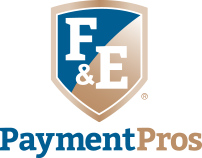More companies and organizations are taking on the task of processing receivables in-house. This process can become hard to manage, especially for those who process large volumes while trying to maintain quality customer service. Organizations who switch to digital remittance software and Digital Accounts Receivable are able to cut costs, and improve their processing and customer service capabilities. Here are some frequently asked questions regarding Digital Accounts Receivable.
What is digital remittance? A new technology using 2001 Federal legislation that allows for the electronic processing of all US draft instruments (aka: checks) thanks to Check 21. A Digital Accounts Receivable solution, or stub and check processing solution, allows for the digital processing of checks into your own account management software, with digital remittance to your financial institution.

What are the benefits of Digital Accounts Receivable? One of the greatest benefits is the elimination of
human error when processing accounts receivable. Mistakes occur easily when thousands of checks are input manually, but with Digital Accounts Receivable the checks are scanned and processed automatically, which vastly reduces the margin of error. Once checks are processed, they are deposited immediately. This maximizes cash flow, and helps you get paid faster.
Who benefits? Several different functional areas in the office can benefit from Digital Accounts Receivable. The software applies the payment to the appropriate accounts receivable, which simplified the accounting process. From a managerial standpoint, it helps with staffing issues because payment processing that once took several employees and countless hours of labor can be completed much more efficiently and accurately. Finally, employees can reap the benefits while knowing their schedule won’t be interrupted by the accounts receivable process each month. In a recent blog, we discussed the effects that fluctuations in labor have on the morale of employees who are asked to provide assistance in processing accounts receivable each month.
What is the typical cost savings? Due to the variability of wages from state-to-state, it’s most accurate to compare cost savings in terms of labor hours. Users are able to increase the number of accounts they service while reducing the number of hours it take to process accounts receivable. For example, this F&E customer nearly doubled service connections, while vastly reducing labor hours: “…we have gone from around 6,000 service connections to 10,500. We have added no people to handle the number of bills because of your system. In fact we save 4-1/2 work hours each day with the system and get same day deposit… ” – General Manager, Northern Ohio Rural Water
To receive the latest updates on payment processing solutions, subscribe to our newsletter.

